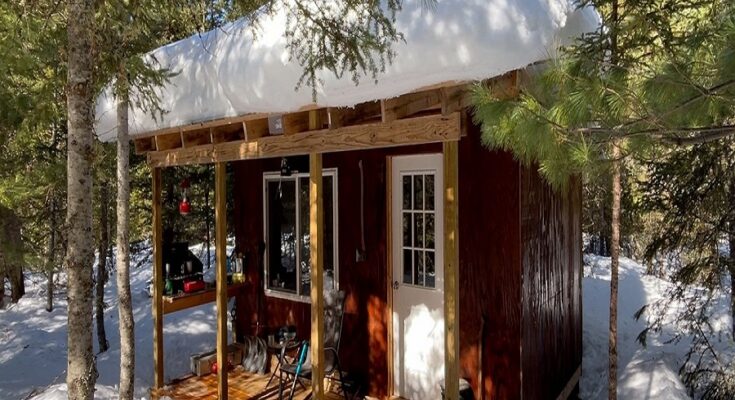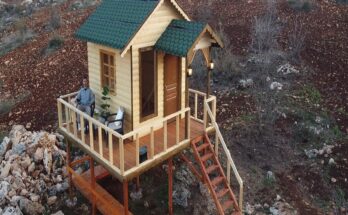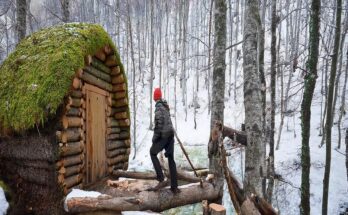Saving the off-grid cabin is more than just preserving a structure; it is about preserving a lifestyle, a connection to nature, and a way of living that prioritizes sustainability and self-sufficiency. Off-grid cabins, often nestled in remote, rugged areas, are built with the intention of being independent of public utilities like electricity, water, and sewage systems. These cabins are a reflection of human ingenuity, resilience, and the desire for solitude in a world increasingly dominated by urbanization and technology. However, as time passes, these cabins can fall into disrepair, facing issues such as structural damage, deteriorating foundations, and the wear and tear that comes with isolation. The challenges of maintaining such a cabin are considerable, but with the right approach, they can be overcome, preserving these special places for future generations.
The first step in saving an off-grid cabin is assessing its current condition. A thorough inspection is necessary to identify any structural issues, including the foundation, roof, walls, and windows. These elements are critical for ensuring the safety and stability of the cabin, and any damage must be addressed immediately. The cabin’s off-grid systems, such as solar panels, wind turbines, or rainwater collection systems, should also be carefully inspected. Over time, these systems can degrade or become outdated, making it difficult to sustain the cabin’s self-sufficiency. Solar panels may need to be cleaned or replaced, batteries may need to be replaced or upgraded, and water filtration systems may require maintenance. Ensuring that these systems are functioning optimally is crucial for the long-term sustainability of the off-grid cabin.
Beyond physical repairs, there is also the matter of modernizing the cabin’s systems to meet the needs of the present. While off-grid living is inherently sustainable, technology has evolved significantly, and there are now more efficient ways to generate energy, store power, and manage water. For example, the use of modern, energy-efficient appliances can significantly reduce the energy demands of the cabin, making it easier to live off the grid without relying on diesel generators or other carbon-intensive power sources. Upgrading insulation, sealing gaps, and using eco-friendly building materials can help minimize energy loss and make the cabin more comfortable year-round. These modern updates ensure that the cabin remains sustainable without compromising its off-grid charm.
Equally important to the physical aspects of saving the cabin is ensuring its continued role in the community. Many off-grid cabins are part of a broader tradition of independent living, where people are not just self-reliant but also contribute to the cultural heritage of remote areas. Saving the off-grid cabin can be a way of preserving this cultural connection, allowing future generations to experience the unique lifestyle it offers. In some cases, these cabins are passed down through families or communities, making them symbols of continuity and heritage. By maintaining the cabin, one can keep this tradition alive, offering a place of refuge and solitude, a retreat from the pressures of modern life.
Environmental factors also play a significant role in the preservation of off-grid cabins. Climate change, in particular, is posing new challenges to remote areas, with rising temperatures, more extreme weather events, and changing ecosystems. Off-grid cabins must be designed to withstand these new environmental realities. This may involve upgrading the cabin’s weatherproofing, reinforcing its structure against storms, or adapting it to a changing landscape. The importance of eco-friendly practices, like composting toilets, waste recycling, and sustainable building practices, cannot be overstated in these efforts.
Saving the off-grid cabin is an endeavor that involves both technical and philosophical considerations. It requires a balance between honoring the original design and intent of the cabin while incorporating modern technologies and sustainability practices. Whether it’s a quiet retreat in the woods, a family heirloom, or a symbol of independence, the off-grid cabin represents a simpler way of life that is increasingly rare in today’s fast-paced world. Preserving these cabins not only saves an important part of our architectural and cultural heritage but also ensures that future generations can continue to experience the peace, independence, and beauty that comes with living off the grid. In doing so, we not only protect the cabin itself but also the values and lifestyle it represents, maintaining a crucial connection to nature and self-reliance that is all too often lost in modern society.



